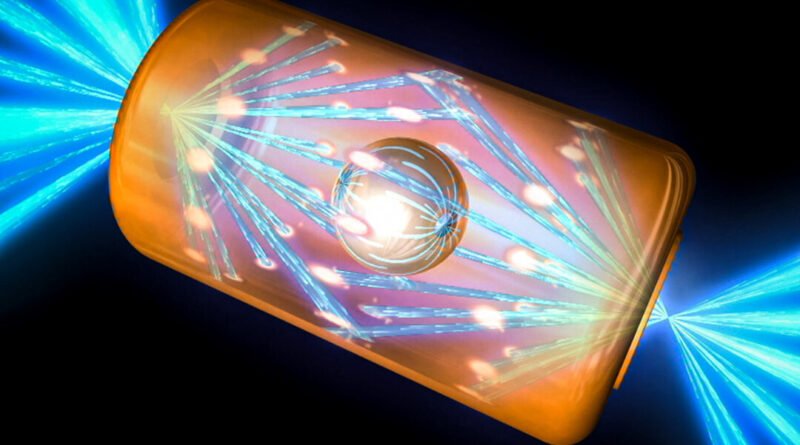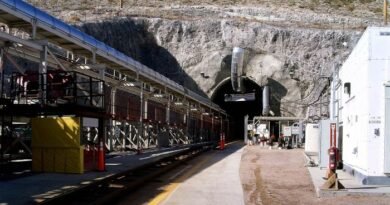Advancements in Nuclear Fusion Technology Bring Us Closer to Achieving a Long-Awaited Dream
Generating nearly limitless, clean, carbon-free energy from nuclear fusion—a vision that seems to be perpetually out of reach—has taken major steps in the past several years toward becoming a reality.
On the heels of major recent breakthroughs in physics labs in generating nuclear fusion, the quest has now expanded into the private sector, where a proliferation of start-up companies are racing to make the process commercially viable, and profitable.
If they succeed, the prize would be an abundant source of virtually carbon-free energy that does not consume vast acres of natural landscapes and coastal areas, as do solar panels and wind turbines. And, unlike today’s nuclear-fission reactors, fusion energy produces relatively little radioactive waste.
Tritium and deuterium, isotopes of hydrogen, are the elements used in fusion, rather than heavy elements like uranium and plutonium that are used in fission. The final products of a fusion reaction are helium and neutrons.
Besides producing less waste, nuclear fusion does not entail the risk of runaway chain reactions like Chernobyl, scientists say.
If a fission plant shuts down during an emergency, “it can still produce a lot of power for a while from the leftover activity in the reactor, and this is why it melts,” Jean Barrette, physics professor emeritus at McGill University, told The Epoch Times.
“Whereas with nuclear fusion, you turn the switch off and it’s over; it doesn’t have any leftover radiation.”
While the potential benefits from fusion are manifold, harnessing it for electricity remains a daunting task.
“The fundamental process is well known, and of course, that’s what powers the stars,” Robert Fedosejevs, professor of electrical engineering at the University of Alberta and a specialist in laser technology, told The Epoch Times. But “fusion is the most technologically challenging approach to making energy that mankind has ever attempted.”
Within stars, immense gravity creates intense heat and pressure that causes several hydrogen nuclei to fuse into a single helium nucleus. There is a slight loss of mass in this process, and that “missing” mass is converted into enormous amounts of energy according to Albert Einstein’s famous equation, e = mc².
Absent the gravity of the sun, however, the challenge on earth is not only creating continuous fusion, but doing it in a way that doesn’t require more energy than it produces.
In December 2022, the Lawrence Livermore National Laboratory’s National Ignition Facility (NIF) in California crossed this threshold. Through the work of about 1,000 U.S. and international scientists, the NIF created a fusion reaction that, for the first time, produced more energy than it consumed.

Staff pose for a photo at the heart of the National Ignition Facility at Lawrence Livermore National Laboratory in Livermore, Calif., in this file photo. Steve Jurvetson/CC BY 2.0
It was done by firing 192 simultaneous laser beams into a tiny peppercorn-sized capsule of deuterium and tritium (DT) to compress and heat it to temperatures between 50-100 million degrees Kelvin until it fused, with the product being a helium ion, a neutron, and energy.
“They’ve basically produced multi mega joules of fusion energy, with only two mega joules of laser energy going in,” Fedosejevs said. “That’s the scientific benchmark that people have been working toward for the last 50 to 60 years, to at least show that in the laboratory you can generate more energy out than in.
“So there’s no question fusion works. It’s really, how can we technically achieve it in a sustainable fashion as a power source?”
Moving From Labs to Functional Reactors
Going from a one-off, nano-second reaction in a laboratory to the reliable and cost-effective production of electricity is where scientists, engineers, and investors around the globe are turning their focus.
“We are very, very far away from working plants,” Barrette said. “You need success in many, many directions.
“It’s not one thing they’re missing. They’re missing many things right now that all have to work to make an efficient reactor.”
The first is how to create sustained reactions through fusion, in order to generate base-load electricity. Development in this area is going down one of two paths: laser inertial confinement fusion, the process used by NIF, and magnetic confinement fusion, which uses a magnetic field to simulate the intense gravity within stars.
Laser fusion, which Fedosejevs describes as a “micro-implosion in a vacuum vessel driven by an ultra-short laser pulse,” has taken the lead in terms of producing net energy gains from the reaction. The DT fuel targets are meticulously arranged, and the lasers are all aimed precisely at a space about the width of a human hair.
They are then fired once before having to be recharged and re-aimed. The process allows for about one reaction per day.

To become viable for electricity generation, lasers would have to fire at least 100 times per second, Barrette said, and although solving this and other problems is not impossible, “they are now still very much in the research phase.”
Innovators in this space are working to develop more powerful lasers that can operate at a much higher repetition rate in order to produce energy continuously.




